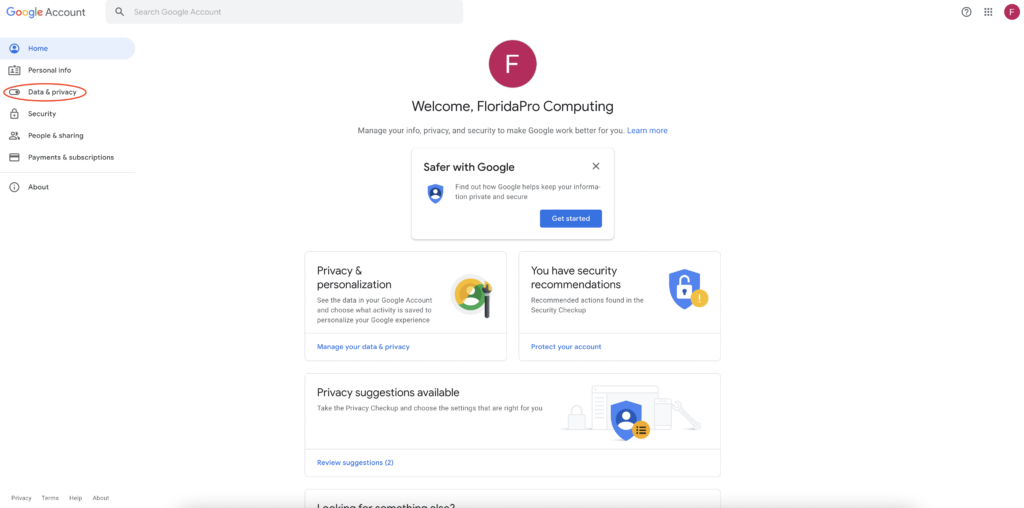
Password management systems allow you to keep track of and store all of your passwords in a secure and centralized location. As most of us have multiple accounts for multiple platforms and servers, all of which require different passwords and methods of authentication, password management is an effective way to ensure that you can always access and store your personal information and account details. This deep dive will outline several options for password management, their benefits and drawbacks, as well as general usage.
Keychain and iCloud Keychain
Keychain
Keychain password manager is an integrated encryption system that is built right into your macOS. All of your passwords, as well as credit card information, are securely encrypted and stored on your machine, and you can access them using your keychain password, which is the same as your log in password. You can then access and keep track of these passwords using the “Keychain Access” application on your Mac. The keychain feature is also available on iOS devices, although they do not have the Keychain Access application.
To access your keychain passwords on your Mac, select the magnifying glass symbol in your tool bar at the top of your screen, or press “Command+Spacebar”. In the search bar, type “Keychain Access.” Select the application from the top of the results page. The window that opens will then display all of the passwords for your various accounts, applications and devices.
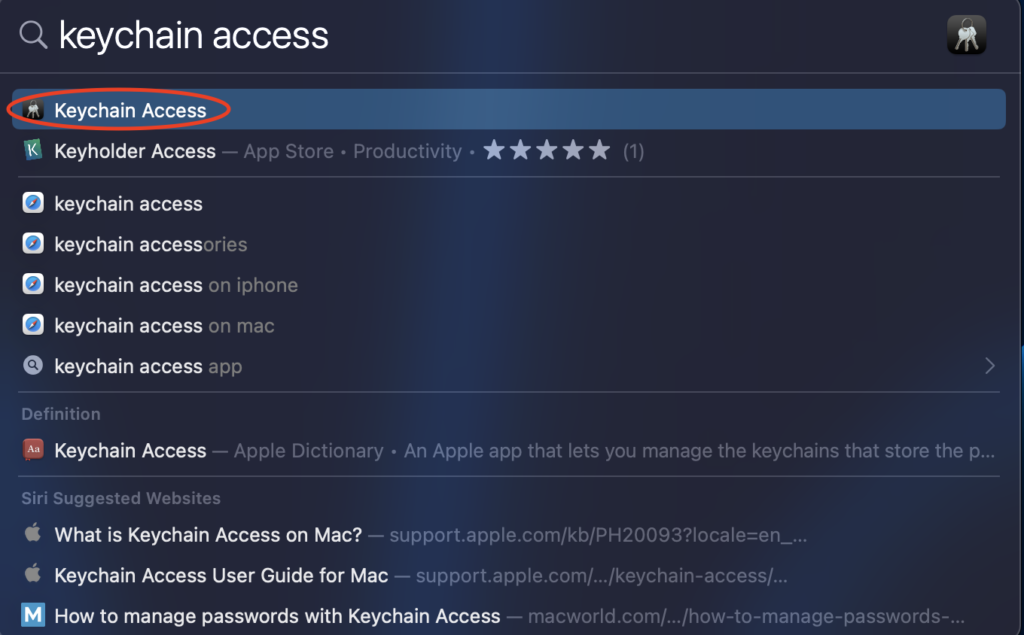
On the far left-hand side of the window, your keychain passwords will be organized into two major groups: default and system. Default keychains involve your log in information that has been saved either through Safari or through other applications that require sign-in credentials. Meanwhile, system keychain passwords are mainly network passwords, or sign in information for software applications.
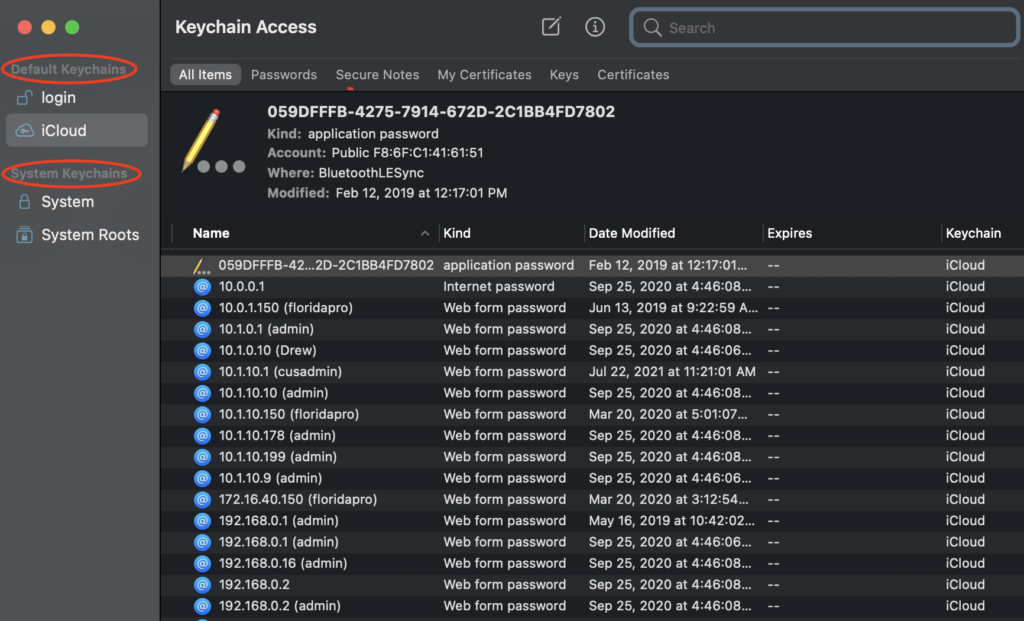
To access any of the encrypted passwords from the Keychain Access application, select the desired password that you would like to reveal, these are designated by the name of the website the password is used for. At the very bottom of the window that populates there is a check box titled “show password.” You will then be prompted to enter your keychain password in order to access this information. Your keychain password will always be the same as your log in password, unless your keychain has been corrupted. If the log in password does not match your keychain password, reach out to your nearest Apple Service Provider for assistance.

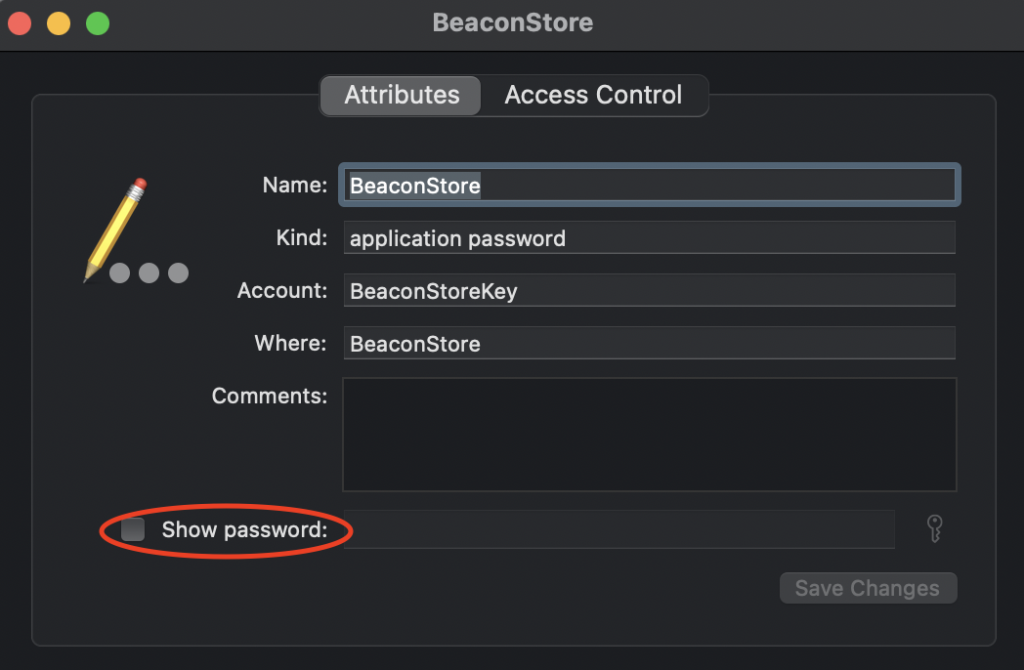
From this window, you can also re-name the password as it appears in your Keychain Access application, as well as add comments or notes for future reference. If you navigate to the “Access Control” tab you can also allow all applications on your device to access this specific password, or to restrict access to specific applications.

To add applications that can access this password, select the plus sign in the bottom right corner.
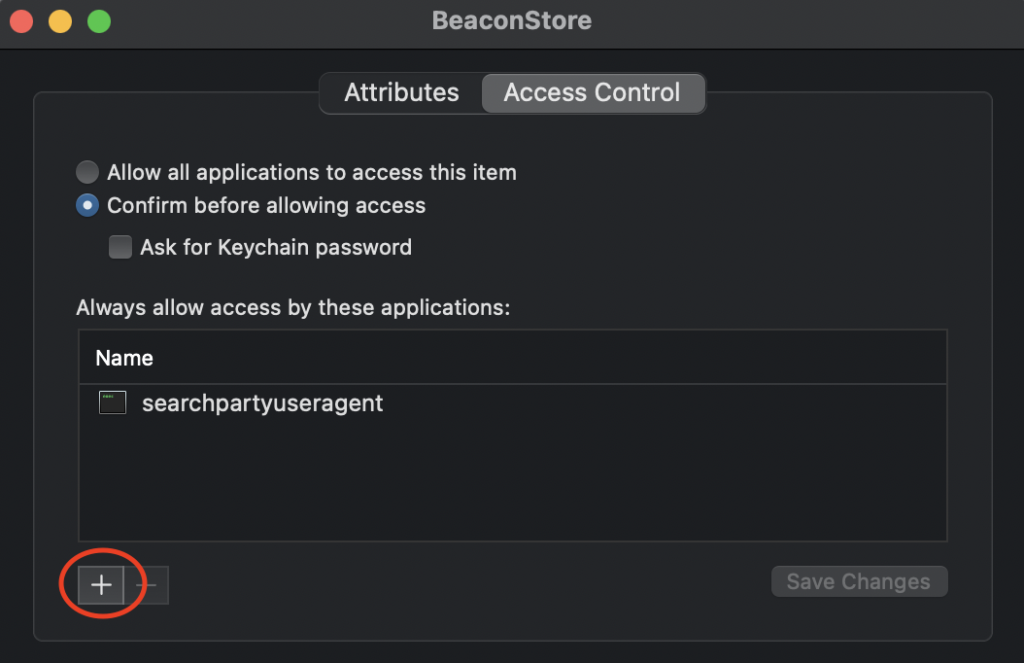
The Finder window will populate, and from the menu on the left-hand side select the “Applications” tab, from here you can select all applications that you would like to have access to your password.
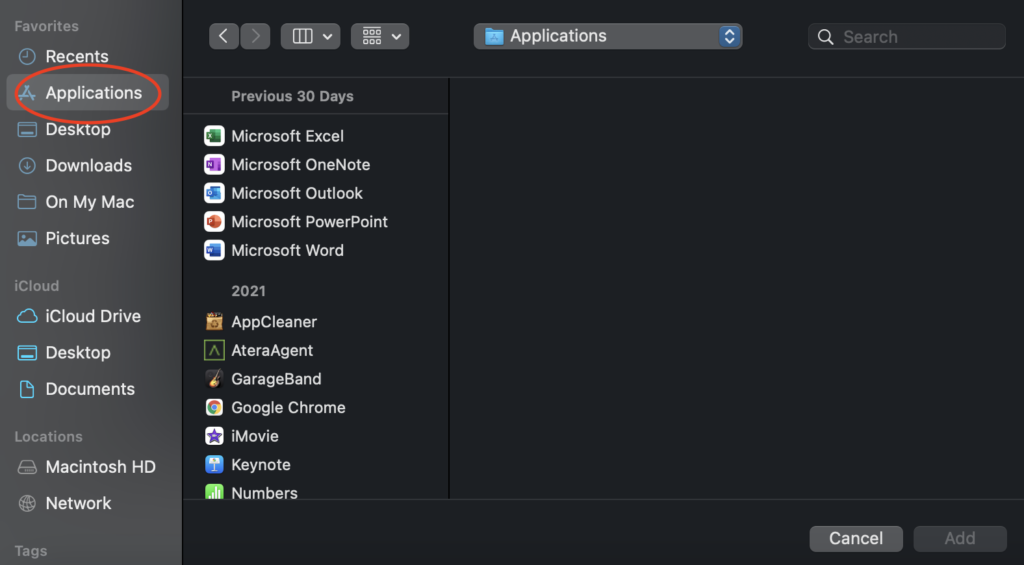
Whenever you sign into an account on Safari for the first time, the application will automatically prompt you to save the password to your Keychain. The pop up will ask you if you would like to save the password, and you can either save it immediately to the keychain, ask Safari to no longer prompt you to save the password, or ask Safari to prompt you again later. If you save the password using this feature, it will be now be accessible through your Keychain Access application, and it will also autofill whenever you proceed to enter the password.
Your Keychain password can also store credit card information, if you allow your Safari to save the card number the first time you enter it on your browser. You can also access these card numbers through the Keychain application the same way you check your saved passwords. Once the card information has been saved, it will automatically populate on Safari whenever you begin to enter your card credentials. You can save multiple cards to your Keychain, which you can then use the autofill feature to enter in Safari, you simply need to choose the card you would like to use from the drop down menu that populates in any field that asks for your card information.
iCloud Keychain
iCloud keychain differs from the traditional keychain in that it can store your passwords across multiple devices that are signed into the same iCloud account. Even if you have an iOS and a macOS device, both machines will store and update their saved passwords simultaneously. Not only does this provide universal access to all of your accounts across all platforms, but it also provides an additional back up of all of your passwords in case any of your devices break. iCloud keychains also have the ability to automatically sign you into various social media and email accounts whenever you set up a new device.
If you would like to set up iCloud keychain on your Mac follow these steps:
- Select the Apple logo in the top right corner and from the drop down menu select “system preferences.”

- On the next window, select “AppleID,” then select iCloud from the menu on the far left.
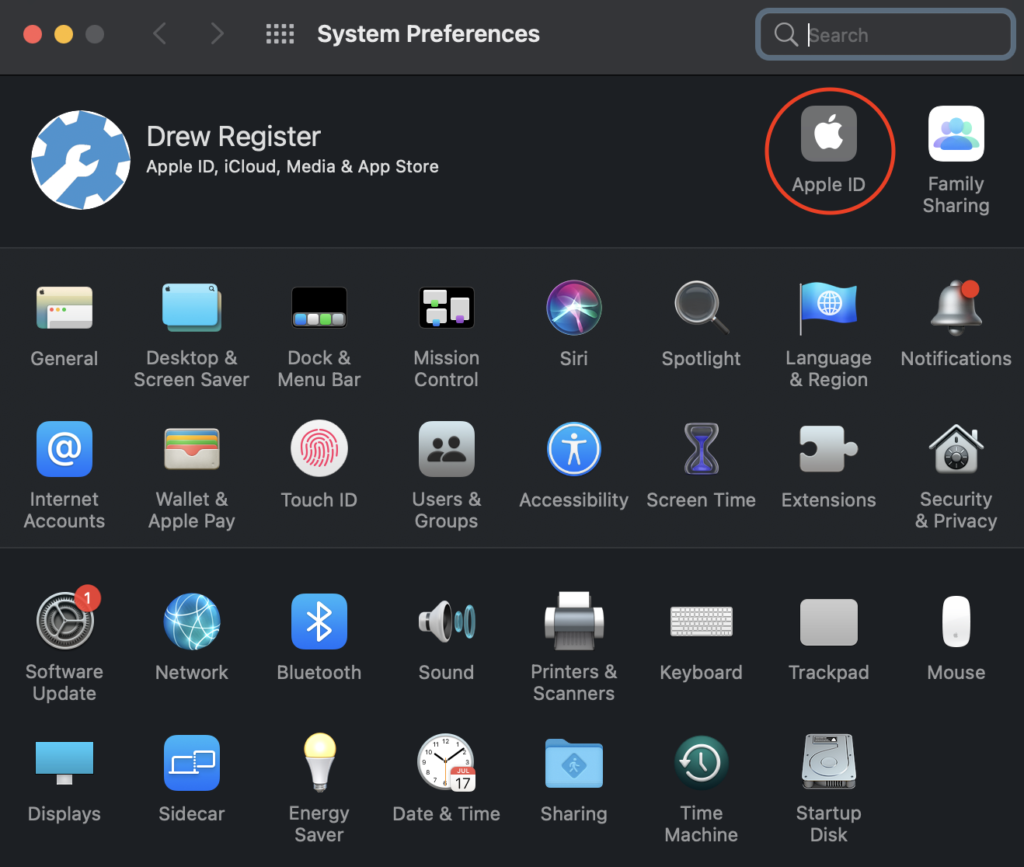
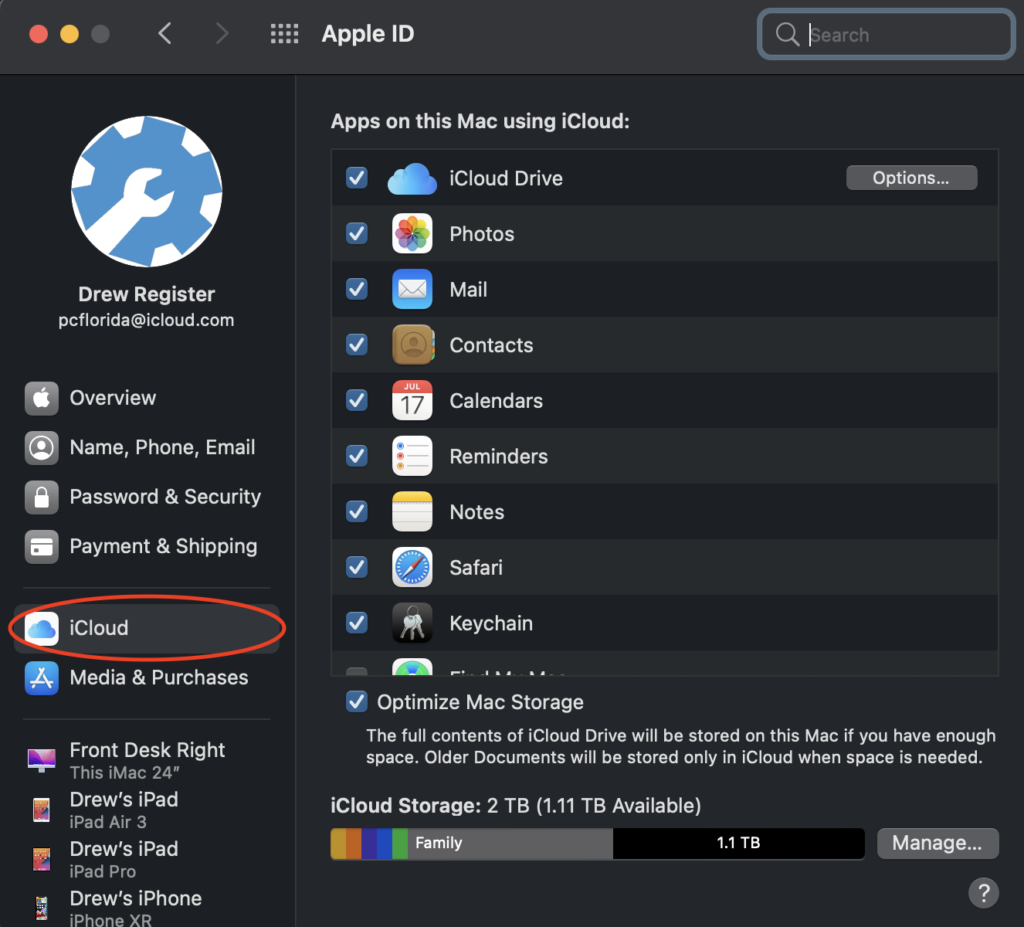
- To enable keychain on your account and on your device, select the box titled “Keychain” from the list of iCloud features on the right hand side of the window.
- Please note that you will need to make sure that your device is signed into an iCloud account before activating this feature, as it is only accessible through iCloud.

If you would like to set up or approve an iOS device, follow these steps:
- Open “Settings” and select your name at the top.

- On the next screen, select “iCloud” and then “Keychain.”
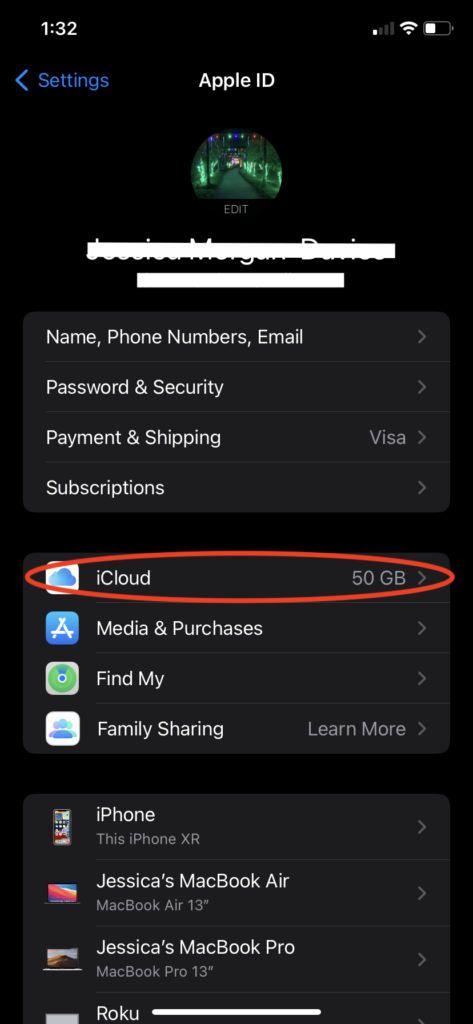
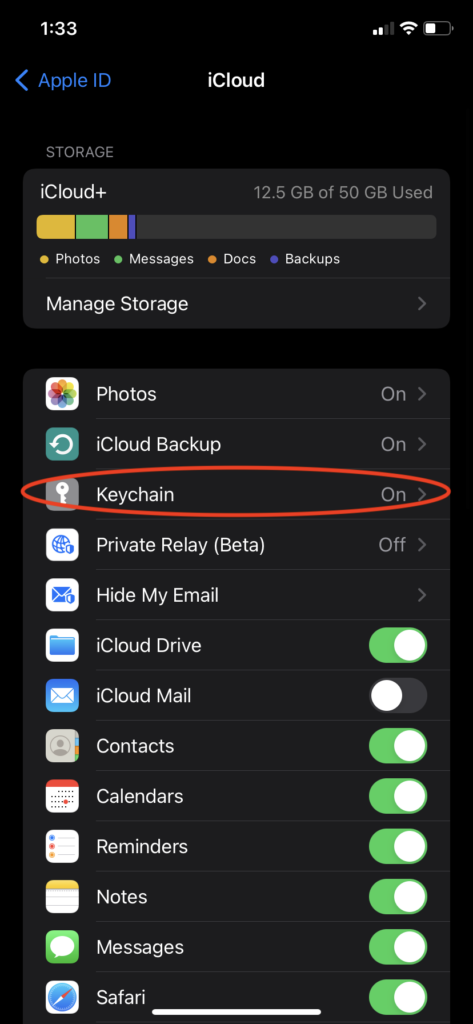
- Tap on the switch in the top right corner to turn on iCloud keychain, once it is turned on, the switch should change colors from grey to green
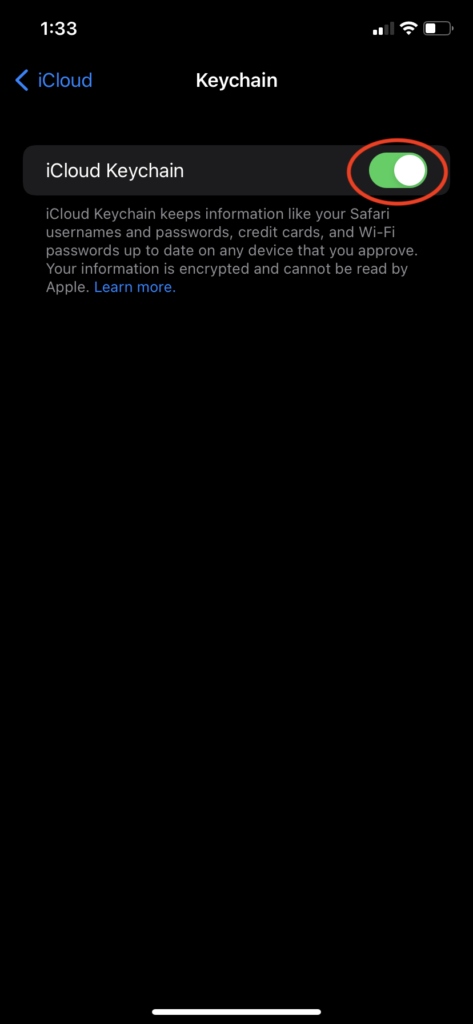
Additional Password Management Services
There are also several different platforms that you can use to store and manage your passwords. These services are usually paid for via a subscription, and involve downloading a separate application onto your device. These applications automatically encrypt and back up all of your passwords, and ensure that even if your own device breaks, your passwords will continue to be protected and accessible through the servers of your chosen management service.
The password manager we primarily recommend is 1Password. This service is offered through a monthly subscription, which for one person bills $2.99 per month, or for family services can cost $4.99 per month. 1Password allows you to save and store an unlimited amount of passwords, in addition to 1GB of document storage. Your information is protected not only through a password locked encryption, but also through two factor authentication. This means that your personal data is protected twice over, so that even if you have access to your passwords through unlimited devices, your information is still secure.
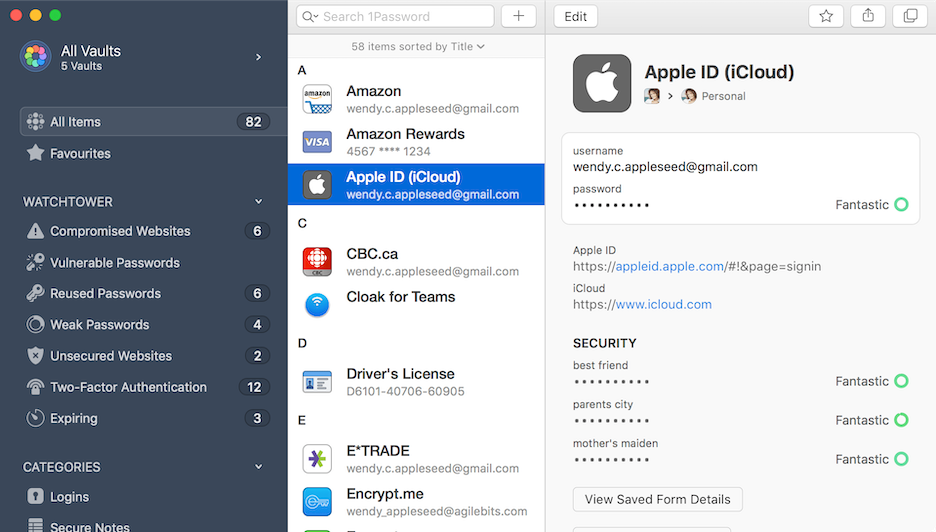
1Password also gives you the ability to save card information for future use. You can then allow 1Password to automatically fill in your card information on any web browser, similar to how the Keychain feature works on Safari.
It is important to note that some web browsers have their own password management installed — Google Chrome, for example, allows you to save and access your passwords from their platform, with these passwords being saved to the Gmail account that is currently signed into the browser. Chrome will then autofill these passwords whenever you are signing into those websites.
You can access your saved passwords by going to passwords.google.com, from there you can sign in using your Gmail credentials. Your passwords will be listed according to the website that they are used for, and you can simply select the password you would like to reveal, enter your Gmail credentials, and access your password. From this page you can also edit or delete the password from your account.

Google Chrome also offers Password Check Up, which is a feature that can touch on the safety and security of your current passwords. Password Check Up not only checks to see if any of your passwords have been compromised in any form of data breach, but will also determine if any of your passwords are weak or reused, and can recommend ways to increase your online security.
In addition to the Password Check Up feature, Chrome offers recommendations for privacy and security when it comes to protecting your identity and personal information. These include privacy suggestions and history settings that can track and monitor your internet usage so as to prevent any dangerous browsing habits or continued access to non-secure sites. To access your privacy suggestions and history settings, first go to your Google account page, accessible through your initial in the top right corner of your Chrome browser. On the next page, select the “Data & Privacy” tab on the left hand side. On the next screen you can select “Review Suggestions” to access your Privacy Suggestions, or scroll down to see your browsing history.
